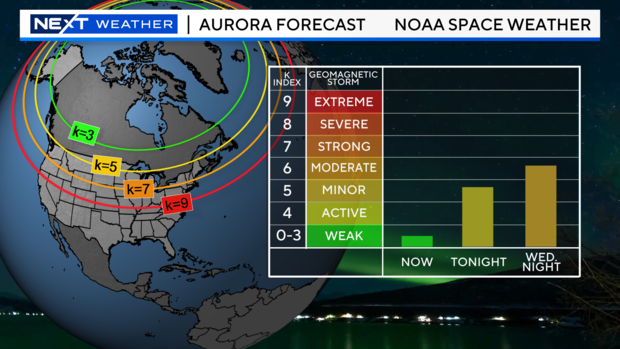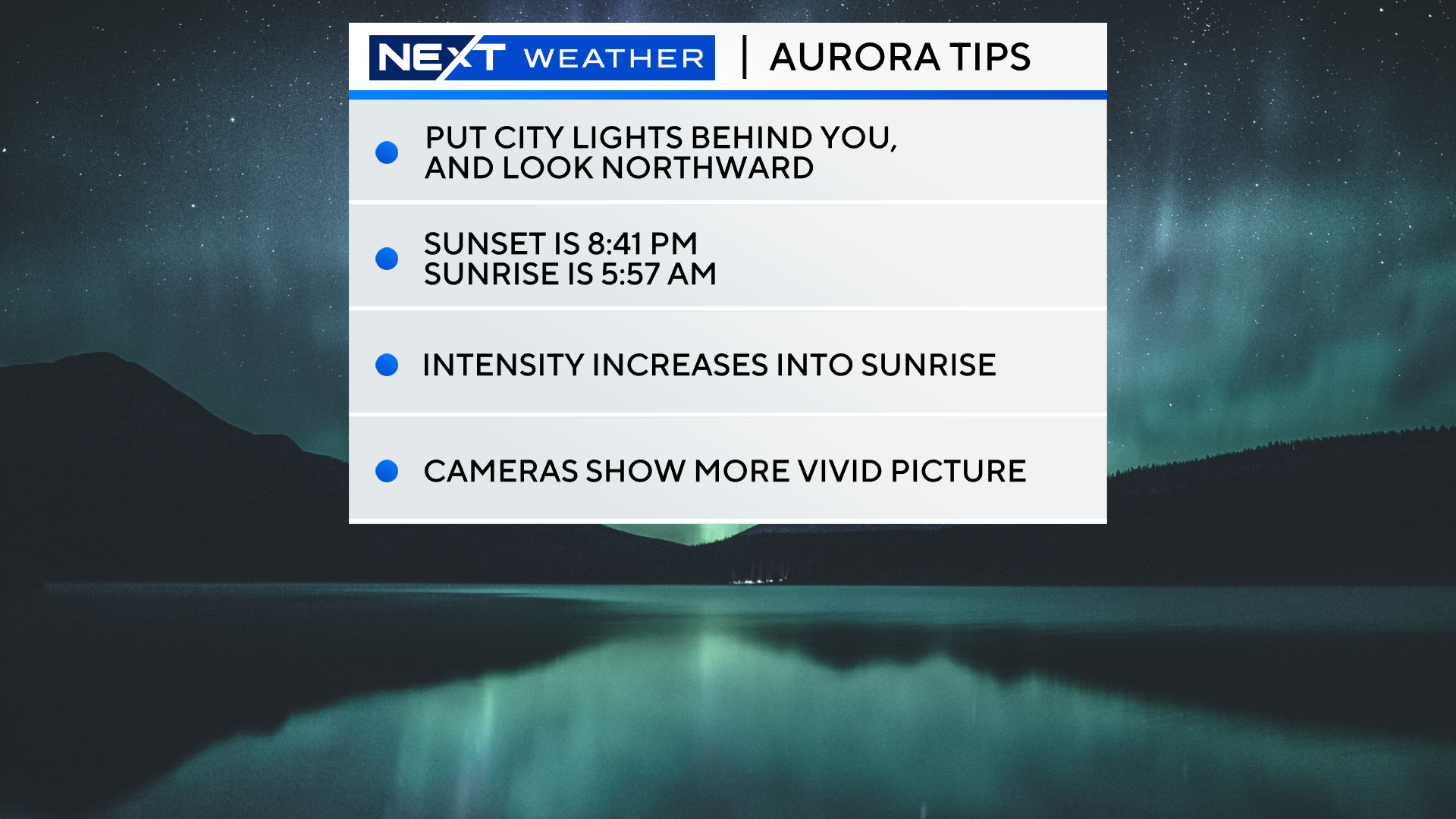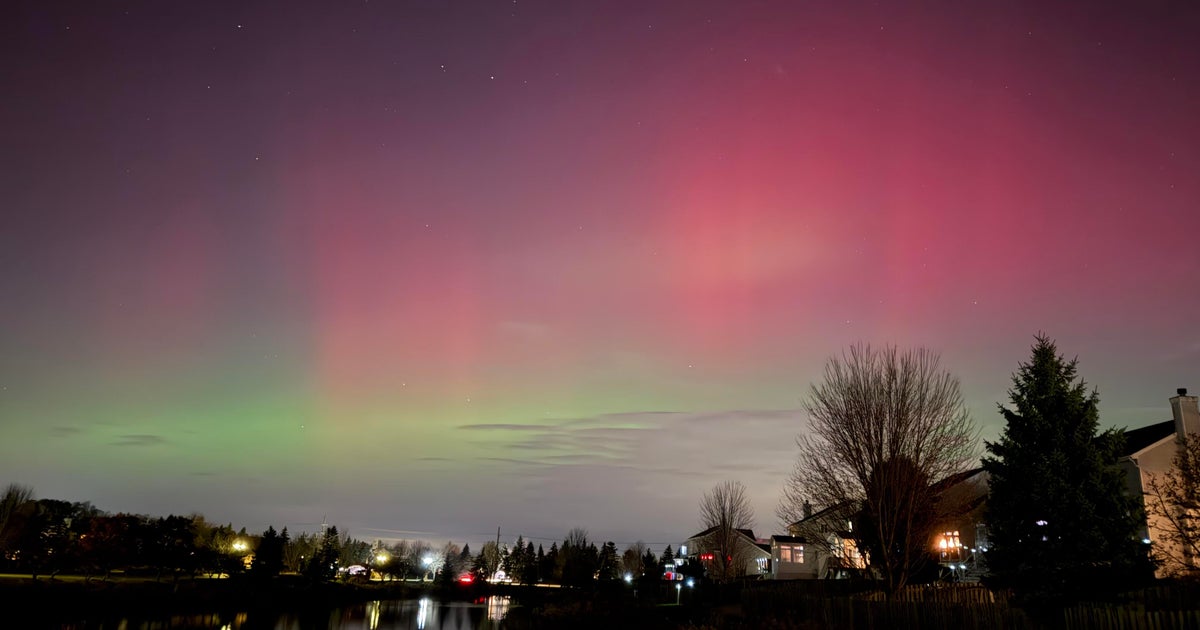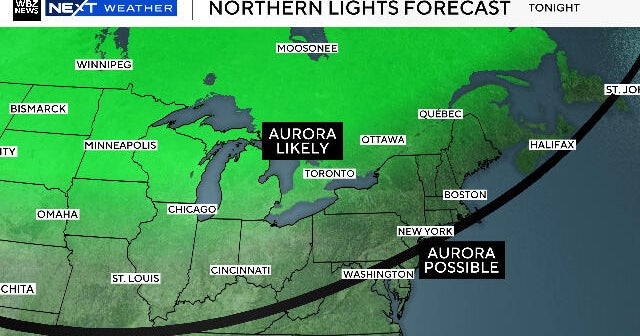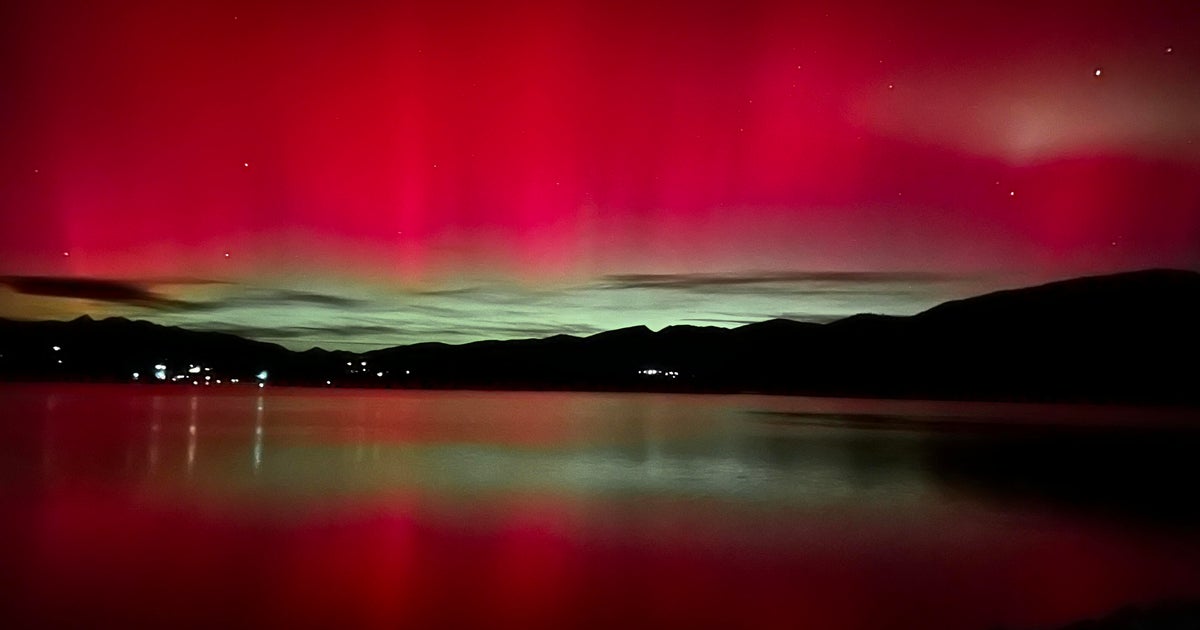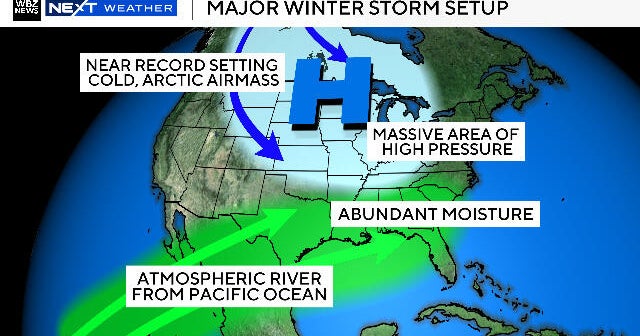The northern lights are expected to light up Minnesota's sky this week
MINNEAPOLIS — Minnesotans, consider this your aurora borealis alert. The northern lights are likely to light up the sky early this week, but there's still uncertainty in the forecast.
A geomagnetic storm watch is in effect through Thursday due to several coronal mass ejections, according to the National Oceanic and Atmospheric Administration's Space Weather Prediction Center. Several CMEs are expected to reach Earth and lead to increased geomagnetic activity.
When CMEs arrive at Earth, a geomagnetic storm — accompanied by northern lights — can result.
When's the best chance to see the northern lights?
The aurora was seen in some places Monday night and into the early hours of Tuesday, but was faint after a change in geomagnetic conditions. (See below for the difficulty of forecasting these events)
But there are still more shots to see the show.
As of Tuesday morning, the latest forecast shows the chance for geomagnetic storming in the evening hours just after sunset.
The next shot is from midnight to sunrise Thursday morning.
Clouds will be more-or-less cooperative Tuesday night into Wednesday morning. Wednesday night into Thursday morning is forecasted as being the best shot for an aurora to occur, but cloud cover may hinder viewing efforts.
Where are the best areas to view the northern lights?
According to NOAA's space weather experts, if the geomagnetic storms arrive during the late evening hours, "the aurora could become visible at times as far south as the northeast U.S. through the upper Midwest, and across the rest of the northern states to include northern Oregon." In short, Minnesota is among the states with the chance to see the northern lights.
For an optimal viewing experience, move far from higher-populated areas and have a clear view to the north.
The very best viewing would be in the Boundary Waters Canoe Area Wilderness, officially recognized as the closest International Dark Sky Sanctuary.
Acknowledging the difficulty in forecasting northern lights
Simply put, space-weather forecasting is hard. Meaning, there's still uncertainty in the forecast.
The sun is 91 million miles from Earth, which means a fast solar wind reaches us in about 80 to 90 hours; that's why accurate aurora forecasts are hard to make beyond two to three days.
It also means that, if the forecasted solar wind speed is off by only 1% to 2%, the time of arrival at Earth will be 1 to 2 hours different. That's a big impact for such a slim margin of error.
Learn more about forecasting atmospheric weather here.
What causes northern lights?
According to NASA, auroras are caused by waves of charged particles emitted by the sun, known as solar wind.
When those charged particles come into contact with atoms and molecules in Earth's upper atmosphere, they create neon-green waves — similar to the collision of electrons and neon gas in neon lighting.
In May, the northern lights were seen in many areas of Minnesota amid the strongest geomagnetic storm to impact Earth since October 2003.
Besides producing jaw-dropping aurora borealis, solar flares from this storm impacted some power grids and GPS and communications satellites. The storm also disrupted some navigational systems in farming equipment in the Midwest and other parts of the country amid the planting season's peak.

